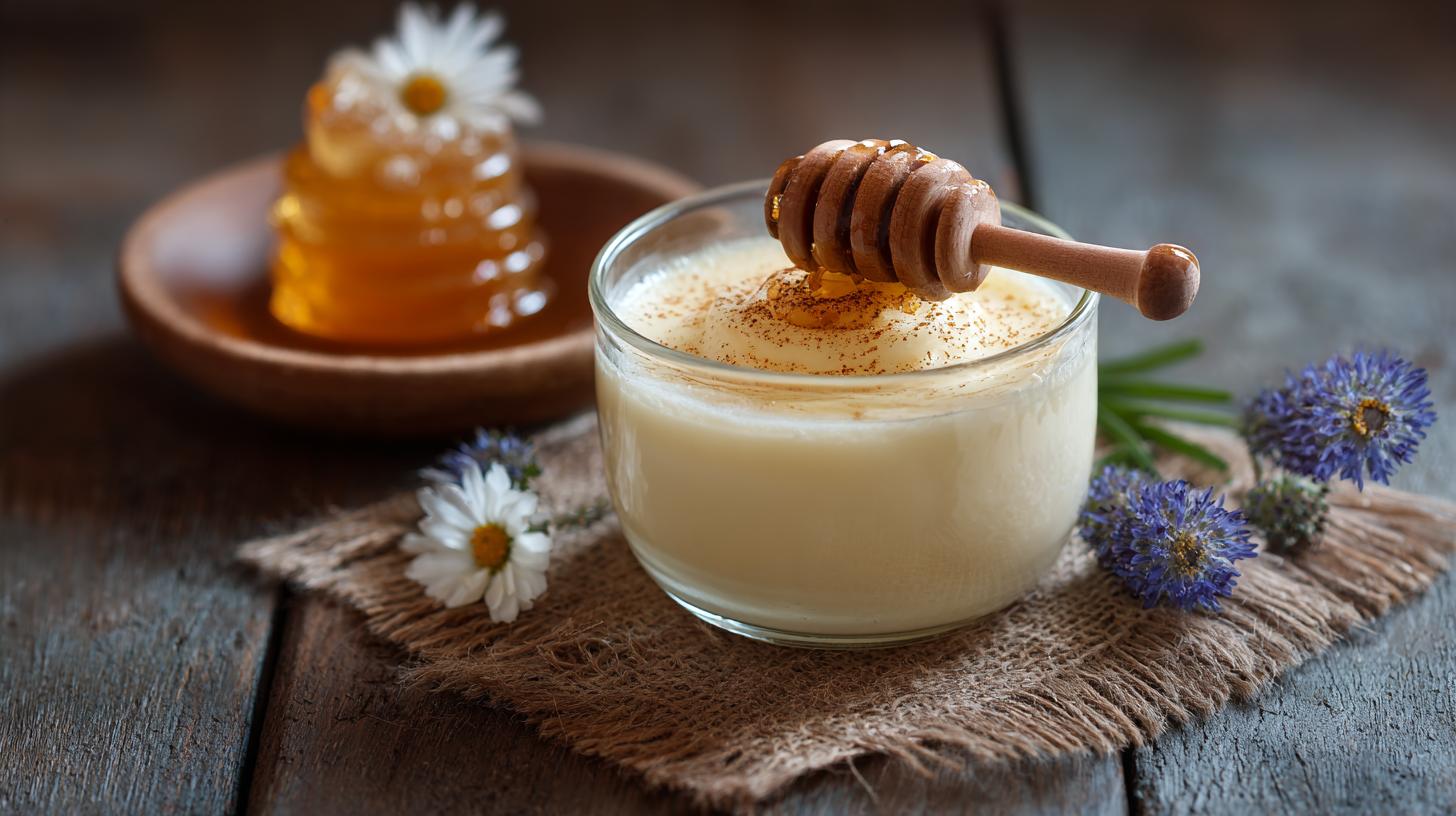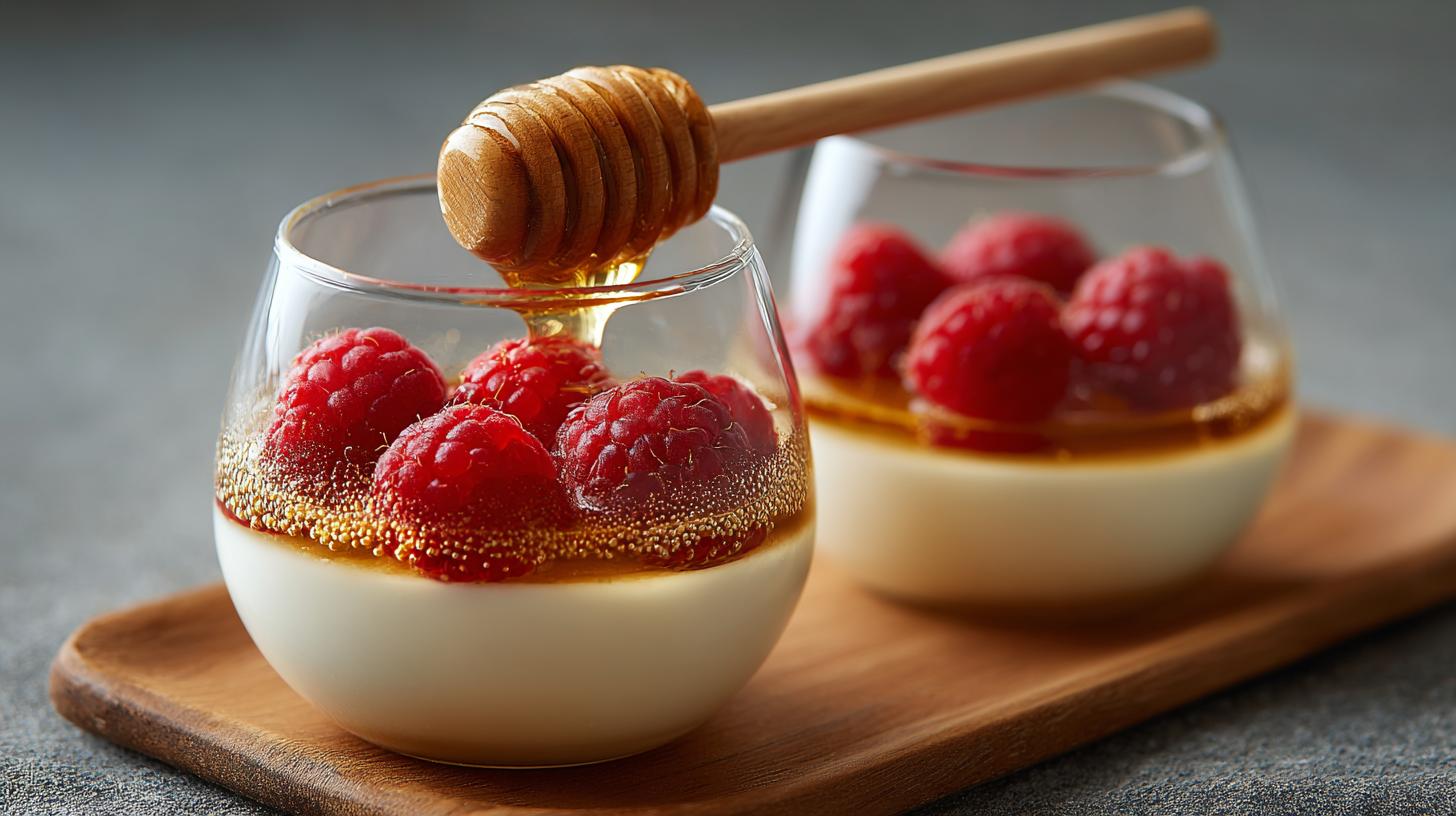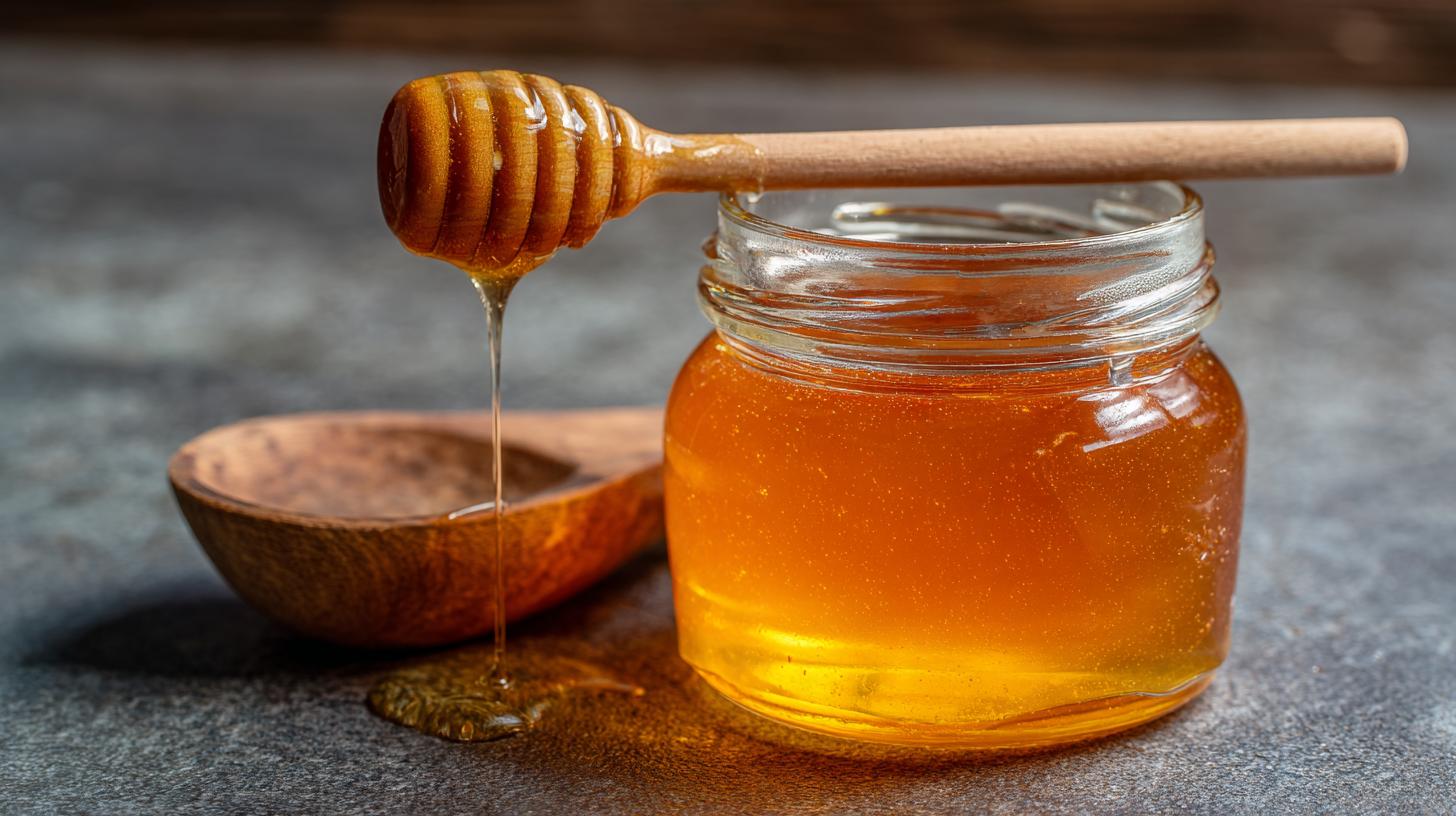Honey has long been treasured not just as a natural sweetener but also for its complex flavors, aroma, and health benefits. Among the diverse varieties of honey, alpine honey stands out due to its distinct taste profile influenced by the high-altitude meadows and the unique plants that bees forage on. If you’ve been curious about how to incorporate this special honey into your cooking, especially desserts, this article is here to help. Today, you will discover how to try our alpine honey in this simple dessert recipe that highlights its delicate floral notes and smooth texture.
Using alpine honey in desserts is a delightful way to bring a rich, nuanced sweetness without overpowering other ingredients. Because this honey has subtler flavors than more common varieties, it complements a wide range of dessert-types, from creamy custards to fresh fruits or even baked goods. Alongside the recipe, we’ll explore some tips for selecting quality alpine honey, ideas for other dessert applications, and information on its health advantages.
What Makes Alpine Honey Unique?

When you try our alpine honey in this simple dessert recipe, it’s helpful to understand what sets this honey apart. Alpine honey is harvested from bees that collect nectar from flowers high in mountainous regions, typically above 1,000 meters elevation. These plants, such as alpine clover, wildflowers, and various herbs, impart a unique flavor profile that is often described as floral, mildly sweet, and sometimes with a hint of herbal or mineral notes.
The environmental factors—like cooler temperatures, clean air, and rich biodiversity—play a critical role in the composition of alpine honey. Compared to lowland honeys, this variety tends to have a more complex aroma and a slightly thicker texture. This complexity makes it a wonderful ingredient to elevate simple desserts.
Flavor Profile and Culinary Uses
Alpine honey does not taste as aggressively sweet or one-dimensional as common clover or wildflower honeys. Instead, it offers a layered sweetness that can enhance both fresh and cooked dishes. The floral notes lend themselves well to pairing with creamy and fruity elements, making alpine honey an excellent addition to desserts where balance and subtlety are key.
Before diving into the recipe, here’s a quick guide to common culinary uses for alpine honey:
- Drizzling over yogurt, panna cotta, or ice cream.
- Mixing into cake batters or doughs for a gentle sweetness.
- Adding depth to fruit compotes and sauces.
- Sweetening hot beverages like tea or herbal infusions.
- Pairing with cheese boards for contrast and sweetness.
Try Our Alpine Honey in This Simple Dessert Recipe
Now, let’s put this honey to delicious use. The recipe below is designed to be easy enough for weeknight cooking but refined enough for impressing guests. It showcases alpine honey beautifully while letting its subtle flavor shine.
Alpine Honey and Greek Yogurt Parfait
This parfait layers creamy Greek yogurt with fresh fruit and a drizzle of alpine honey for sweetness. The textures and flavors combine for a light yet satisfying dessert or snack.
Ingredients:
| Ingredient | Amount |
|---|---|
| Greek yogurt (full-fat or 2%) | 2 cups |
| Fresh berries (blueberries, raspberries, or strawberries) | 1 cup |
| Alpine honey | 3 tablespoons |
| Chopped nuts (walnuts or almonds) | 1/4 cup |
| Vanilla extract (optional) | 1 teaspoon |
| Fresh mint leaves (for garnish) | Optional |
Instructions:
- In a bowl, mix the Greek yogurt with the vanilla extract if using. This will add a subtle flavor that pairs nicely with honey.
- In serving glasses or bowls, create a base layer of Greek yogurt.
- Top with a layer of fresh berries.
- Drizzle alpine honey evenly over the berries.
- Sprinkle chopped nuts for crunch.
- Repeat layering if desired to fill your glasses.
- Finish with a final drizzle of alpine honey and garnish with mint leaves.
This parfait can be served immediately or refrigerated for up to two hours if you want it chilled. The alpine honey brings just enough sweetness to balance the tartness of the yogurt and freshness of the berries, without being overwhelming.
Other Dessert Ideas Featuring Alpine Honey
If you enjoy trying our alpine honey in this simple dessert recipe, why not explore other ways to incorporate this ingredient into your favorite treats? Here are some additional ideas that highlight alpine honey’s versatility:
1. Honey-Glazed Roasted Fruit
Slice seasonal fruits like peaches, plums, or apples, drizzle them with alpine honey and a pinch of cinnamon, then roast until tender and caramelized. Serve warm with vanilla ice cream or ricotta cheese for an elegant presentation.
2. Almond and Alpine Honey Cake
This cake uses ground almonds and alpine honey to create a moist, fragrant dessert. The honey’s floral notes complement the nuttiness beautifully. It’s an excellent choice for gluten-free baking.
3. Honey-Infused Panna Cotta
Panna cotta, a creamy Italian dessert, becomes more interesting when you substitute sugar with alpine honey for sweetening. Top with fresh berries or a simple fruit coulis.
4. Honey and Yogurt Popsicles
Mix Greek yogurt, alpine honey, and fresh fruit puree, then freeze in popsicle molds for a refreshing summer treat that is simultaneously sweet and cool.
Tips for Using Alpine Honey in Cooking and Baking
Before you try our alpine honey in this simple dessert recipe or any other culinary adventure, keep these handy tips in mind to get the best results:
- Use raw or minimally processed honey to preserve the unique flavors and beneficial enzymes present in alpine honey.
- Adjust sweetness based on your taste, but remember alpine honey tends to be milder—sometimes you might need a little more to achieve desired sweetness.
- Avoid high heat since excessive cooking can diminish honey’s delicate floral characteristics and health properties. For baking, add honey to cooler ingredients or drizzle on after baking.
- Pair honey with complementary flavors like vanilla, nuts, fresh fruit, and mild cheeses to create balanced desserts.
- Experiment with texture by combining liquid alpine honey with crunchy nuts or creamy dairy components.
Health Aspects of Alpine Honey

Beyond taste, alpine honey offers several health benefits due to its natural ingredients and the environment where it is produced. It contains antioxidants, vitamins, minerals, and enzymes that can support overall wellbeing. Here are a few points about alpine honey from a nutritional and holistic perspective:
Natural Antioxidants
The high-altitude plants that bees forage on create nectar rich in antioxidants, which help neutralize free radicals in the body. This may contribute to reducing inflammation and supporting cellular health.
Antibacterial Properties
Like other honeys, alpine honey has natural antibacterial properties. This quality can promote healing when applied topically and may soothe sore throats when consumed.
A Source of Energy
Honey is made of simple sugars such as glucose and fructose, providing a quick source of energy. Using alpine honey in desserts is a natural way to fuel your body without relying on processed sugars.
Potential Allergy Mitigation
Some people find that consuming local honey made from native plants helps their bodies acclimate to local pollen and reduce seasonal allergies. Since alpine honey comes from specific flowers in high-altitude regions, it may have similar effects for those living or visiting those areas.
How to Choose Quality Alpine Honey
When trying our alpine honey in this simple dessert recipe, or any other, selecting authentic and high-quality honey is essential. Here are factors to consider when shopping:
| Factor | What to Look For |
|---|---|
| Labeling | Check that it specifies alpine or mountain honey, indicating it’s sourced from high-altitude flora. |
| Color | Typically, alpine honey ranges from pale amber to golden hues. Avoid overly dark or cloudy honeys that may be mixed or adulterated. |
| Purity | Raw and unfiltered honey retain more flavors and beneficial compounds. |
| Source | Reputable producers will provide information about the geographic origin and floral sources. |
| Packaging | Glass jars preserve honey quality better than plastic containers. |
By choosing well, you ensure the full depth of alpine honey’s flavor and nutritional qualities reach your recipe.
Storing Alpine Honey

To maintain the quality of alpine honey, proper storage is vital. Here are some recommendations for keeping it fresh:
- Store honey at room temperature, away from direct sunlight or heat sources.
- Keep the jar tightly sealed to prevent moisture absorption and contamination.
- Don’t refrigerate honey, as it can crystallize faster in the cold.
- If crystallization occurs naturally, gently warm the jar in a bowl of warm water to return it to a liquid state.
With the right storage, alpine honey can last up to two years while retaining its flavor and beneficial properties.
Final Thoughts on Using Alpine Honey in Desserts
Try our alpine honey in this simple dessert recipe and you’ll experience firsthand how a nuanced, natural sweetener can brighten everyday treats. Whether you are making a quick parfait, roasting fruit, or baking cakes, alpine honey adds a sophisticated character that is hard to replicate with sugar or artificial alternatives.
Incorporating alpine honey into your desserts not only enhances taste but also brings a connection to the mountains where the nectar is harvested and a gentle nod to nature’s intricate ecosystems. With its health benefits, subtle sweetness, and elegant flavors, alpine honey invites creativity in the kitchen while supporting sustainable practices.
As you experiment and expand your recipe repertoire, remember to honor the ingredient by using it thoughtfully and pairing it with complementary flavors and textures. Soon enough, you will find that alpine honey is more than just a sweetener—it is an ingredient with story, place, and purpose, making your simple desserts a bit more special, every time.